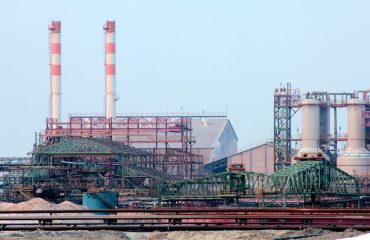From the earliest steam locomotives to the high-speed trains of today, steel has been the backbone of railway infrastructure. Its strength, durability, and versatility have made it an indispensable material in the construction and operation of railways worldwide. This post delves into the multifaceted role of steel in various aspects of railway systems.
1. Steel Rails: The Foundation of Railway Tracks
The most visible application of steel in railway infrastructure is undoubtedly the rails themselves. These long, continuous steel beams provide the track on which trains run. The steel used for rails must possess exceptional strength and wear resistance to withstand the immense forces generated by passing trains, especially heavy freight trains. Commonly used steel grades include high-carbon steel and various alloy steels, often containing manganese, chromium, and molybdenum to enhance hardness, toughness, and fatigue resistance. The manufacturing process involves careful heat treatment to achieve the desired mechanical properties. Continuous casting and rolling are employed to produce long lengths of rail, minimizing the number of joints and improving track smoothness.
2. Steel in Railway Bridges: Spanning the Gaps
Railways often traverse challenging terrains, necessitating the construction of bridges. Steel plays a pivotal role in bridge construction, offering the strength and flexibility needed to span rivers, valleys, and other obstacles. Steel bridges can be built using various designs, including truss bridges, girder bridges, and arch bridges. High-strength steel alloys are often employed to minimize the weight of the bridge structure while maintaining its load-bearing capacity. The design and construction of steel railway bridges require meticulous engineering to ensure structural integrity and safety under varying environmental conditions and heavy loads.
3. Steel in Rolling Stock: Building the Trains
Beyond the track and bridges, steel forms the very essence of railway rolling stock – the trains themselves. From the chassis and bogies (undercarriages) to the car bodies and various components, steel provides the structural integrity and strength needed to withstand the dynamic forces of train operation. High-strength low-alloy (HSLA) steels are frequently used due to their excellent strength-to-weight ratio, allowing for lighter yet robust train carriages. Welding techniques are crucial in assembling the various steel components of rolling stock, ensuring strong and reliable joints.
4. Steel in Railway Signaling and Safety Systems
Safety is paramount in railway operations, and steel plays a critical role in various signaling and safety systems. Steel components are used in the construction of signal masts, switch mechanisms, and other safety-related infrastructure. The durability and resistance to corrosion of steel ensure the long-term reliability of these essential systems. The precise engineering and manufacturing of steel components are essential for the smooth and safe operation of railway signaling and control systems.
5. The Future of Steel in Railway Infrastructure: Innovations and Sustainability
The railway industry is constantly evolving, and the role of steel is adapting to meet new challenges and opportunities. Research and development are focused on developing new steel alloys with enhanced properties, such as increased strength, improved corrosion resistance, and enhanced weldability. Sustainable practices are also gaining prominence, with efforts to reduce the carbon footprint of steel production and improve the recyclability of steel components at the end of their lifespan. The use of lighter steel alloys contributes to energy efficiency in train operation, reducing fuel consumption and emissions. Furthermore, advancements in steel manufacturing processes are leading to improved efficiency and reduced waste, contributing to a more sustainable railway industry.
In conclusion, steel’s contribution to railway infrastructure is undeniable. Its strength, durability, and versatility have been instrumental in the development of efficient, safe, and reliable railway systems worldwide. As the railway industry continues to evolve, steel will remain a cornerstone material, constantly adapting and innovating to meet the challenges of the future.
SEO Tags:
- Steel Railway Infrastructure
- Railway Steel Applications
- Steel in Rail Transportation
- Railway Bridge Steel
- Steel Rail Manufacturing




